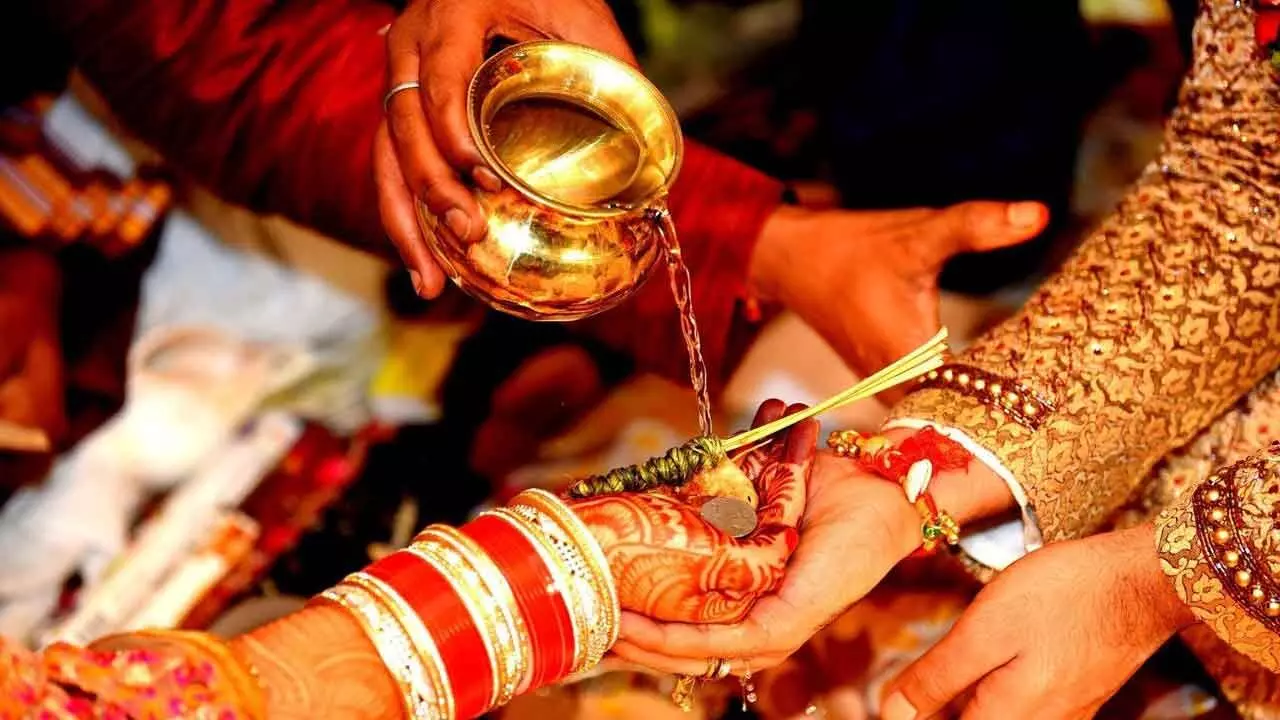Indian Wedding Industry Projected To Touch A Staggering Rs 10 Trn By Next Year
Bridal attire (including saris and lehengas), sherwanis, and jewellery, constitutes a significant expense
Indian Wedding Industry Projected To Touch A Staggering Rs 10 Trn By Next Year

Recognizing the industry’s potential, the government launched a wedding tourism campaign last year to position India as a premier wedding destination globally
The upcoming peak wedding season in India is so enormous that an incredible 48 lakh weddings are scheduled in the next two months. This can potentially generate around Rs six lakh crore in revenue—an increase of 41 per cent compared to last year. This highlights the immense growth in India's wedding economy, with the marriage season extending into 2025.
The Indian wedding industry is seeing a remarkable boom, with projections indicating that it could reach a staggering Rs 10 trillion by 2025. Interestingly, the industry also offers investment opportunities. And like marriage, experts recommend long-term vow.
Indian weddings are renowned for their glitz and glamour. The US$ 130 billion wedding industry, which ranks as the fourth-largest in the country, significantly boosts economic activity, with families spending substantial amounts on each event. The wedding industry comprises various large and small sectors that collectively shape its dynamics. Recognizing the industry’s potential, the government launched a wedding tourism campaign last year to position India as a premier wedding destination globally.
Rich in traditions and rituals, Indian weddings often span over several days and represent the union of two families rather than just two individuals. These are in fact significant social events. The diversity in India’s cultures results in varied wedding customs across regions and religions, like the distinct differences between Punjabi, Tamil and Bengali weddings.
Grand venues like palaces, resorts, and luxury hotels are being favoured, with growing trend towards both domestic and international destination weddings. Food is central to Indian weddings and this offers multi-cuisine options and elaborate setups. Bridal attire (including saris and lehengas), sherwanis, and jewellery, constitutes a significant expense with high demand for designer labels and tailoring.
Lavish decorations, themed setups, and high-profile entertainers, including Bollywood celebrities, are integral to the festivities. Professional photography and videography, including pre-wedding shoots and cinematic wedding films, are deemed essential.
Modern trends in the industry include- the use of technology, such as live streaming, drones for photography, and digital invitations, as well as a growing emphasis on sustainable and eco-friendly weddings. Personalization is a key nowadays, with couples customizing every aspect of their wedding to reflect their personalities and stories.
With about 8–10 million marriages being celebrated each year, India is the world’s largest wedding destination. Given that 34 per cent of the population is in the marriageable age range of 20 to 39 years and an estimated 280 million people currently unmarried, the Indian wedding market is indeed quite substantial.
According to global brokerage Jefferies, India’s wedding market is nearly double the size of the market in the US ($ 70 billion), but still smaller than that of China ($ 170 billion).
In India, wedding expenditures peak during two distinct periods: November to mid-December and mid-January to July; commonly referred to as the ‘Wedding Season.’ These periods coincide with increased economic activity, especially during the first peak period which aligns with the festive season. According to Jefferies, this surge benefits various sectors (catering, retail, hospitality, photography, beauty etc) significantly.
Luxury weddings often feature exotic locations, opulent accommodations, gourmet catering by Michelin-star chefs, and performances by professional artists and celebrities, and typically host about 300 to 500 guests or more. The average expenditure for such lavish weddings ranges from approximately $ 200,000 to $ 400,000, with the higher end exceeding these figures considerably.
In spite of India’s value-conscious culture, the weddings here are notable for their grandeur relative to income and wealth.
An average Indian spends about Rs. 12 lakh per wedding, thrice the average annual household income of Rs. four lakh and around five times the per capita GDP of $ 2,900.
Segment wise, jewellery constitutes the largest portion of wedding expenses, about 25 per cent of the total spending, followed by catering at nearly 20 per cent and events at around 15 per cent.
Within the $84 billion apparel retail market, approximately 11 per cent of sales are driven by wedding and celebration wear. This includes attire for the bride and groom, as well as their families, friends, and guests.
And not to forget, photography and decorations, which represent another significant expenditure. The experienced photographers are available to suit all budgets, ranging from Rs. 10,000 per day to Rs. 0.5 million per day. Decoration typically make up five to 10 per cent of the total wedding budget, encompassing floral arrangements, drapes, lights, candles and other decorative elements.

